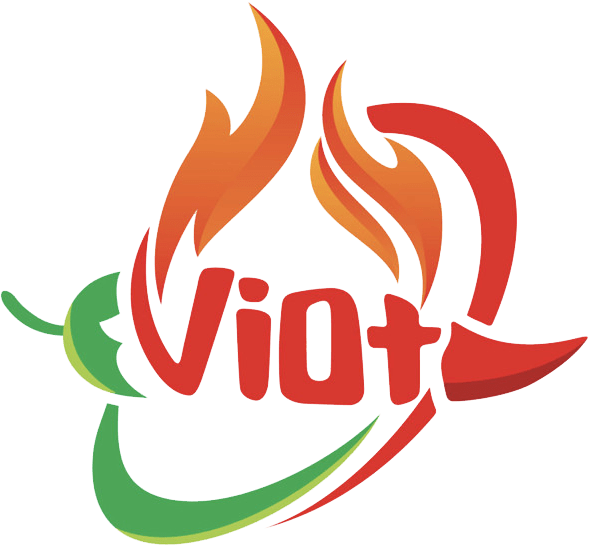Vietnamese agricultural products have long been renowned for their unique characteristics and high quality. However, the export of these products has predominantly occurred through informal channels (small-scale trade), facing numerous risks and lacking stability. Yet, a significant event in April 2025 marked the dawn of a new era for Vietnamese agriculture. Vietnam and China officially signed a series of protocols for the formal (official) export of four key agricultural products: chili peppers, passion fruit, bird’s nest, and rice bran.
The Significance of the Chinese Market for Vietnamese Agricultural Products
China is not only a potential market but also a strategic partner in boosting Vietnam’s agricultural exports. According to statistics, in the first quarter of 2025 alone, Vietnam’s total export turnover of agriculture, forestry, and fishery products reached approximately USD 13.53 billion, an increase of 21.8% compared to the same period last year. Notably, the fruit and vegetable sector accounted for a substantial portion of this figure, with nearly 66% of its export value directed towards the Chinese market.

The Shift from Informal to Formal Trade
Prior to these protocols, Vietnamese agricultural products were primarily exported through informal channels, posing numerous risks in terms of product quality control. Formal exports not only ensure food safety and hygiene but also enhance the brand value of Vietnamese agricultural produce. Consequently, businesses need to elevate their production and processing standards to meet the stringent requirements of the international market.
Significant Achievements in Formal Exports
Key Products
Following the signing of the protocols, a range of agricultural products, including chili peppers, passion fruit, bird’s nest, and rice bran, swiftly entered the Chinese market. Notably, Khanh Hoa Salangane Nest Joint Stock Company pioneered the export of bird’s nest, demonstrating the ability to meet demanding technical and quarantine standards, marking a significant step forward in the agricultural export strategy.
Collaboration Between Businesses and Farmers
The collaborative efforts between businesses and farmers are a crucial factor in harnessing the potential of the Chinese market. They stated: “Previously, passion fruit was only exported in a preliminary processed form. Now, we have introduced fresh fruit into China’s distribution system

Risks and Challenges in Maintaining Quality
Lessons from the Past
Despite numerous successes in agricultural exports, the risk of losing markets due to inadequate quality control remains ever-present. In 2020, Vietnam received a warning from the European Union (EU) regarding pesticide residues in chili peppers and herbs, leading to a six-month suspension of exports to this market. These lessons must be remembered to mitigate similar risks in the future.
Requirements for Traceability
In addition to ensuring product quality, the demand for traceability is increasingly crucial. China and discerning markets such as Japan, South Korea, and Australia all require businesses to invest in clean farming practices and quality control systems before, during, and after harvesting.

Building Effective Cooperation Models
To sustainably conquer the trillion-dollar market, close cooperation among farmers, cooperatives, and businesses is essential. Enhancing management skills and collaborating with research institutions to improve product quality are critical issues for survival and growth.
Investing in Technology and Infrastructure
Businesses need to invest in post-harvest technology, cold chain logistics, and cross-border e-commerce. Applying technology in the processing and distribution stages will not only increase the value of agricultural products but also expand opportunities to access potential markets.
Positioning the Vietnamese Agricultural Brand in the Global Market
Finally, clearly positioning the Vietnamese agricultural brand in the international market is absolutely necessary. By building a strong brand image, Vietnamese agricultural products can go further and dominate the global market.
A New Journey for Vietnamese Agricultural Products
The signing of the official export protocols is not only a significant milestone for Vietnam’s agricultural sector but also unlocks numerous opportunities for the future. However, to achieve sustainable and robust growth, a well-structured strategy and commitment from all stakeholders are essential.
Vietnamese agricultural products have secured a golden ticket to enter the international market. Yet, to go further and compete successfully, thorough preparation is needed, from product origin to marketing strategies and market expansion. This integration is not just an opportunity but also a responsibility for the entire production chain, from farmers to policymakers and the business community.
Vietnamese agriculture is in a golden era to assert its position on the global trade map. Let us work together to turn these opportunities into reality and nurture the dream of a developed and sustainable Vietnamese agricultural sector.





Tác giả Tưởng Mạnh Biên
Là chuyên gia giàu kinh nghiệm trong lĩnh vực xuất khẩu nông sản. Với nhiều năm làm việc, nghiên cứu và trực tiếp tham gia vào các hoạt động sản xuất, kinh doanh và xuất khẩu nông sản, tác giả chia sẻ những kiến thức chuyên môn sâu sắc cùng các bài học thực tiễn giá trị nhằm hỗ trợ doanh nghiệp.
- Địa chỉ: Số 27, Tổ 23, Lĩnh Nam, Hoàng Mai, Hà Nội
- Email: viotvietnam.vn@gmail.com
- SĐT: 0977 728 269